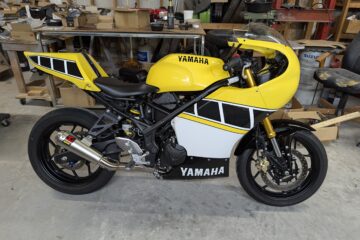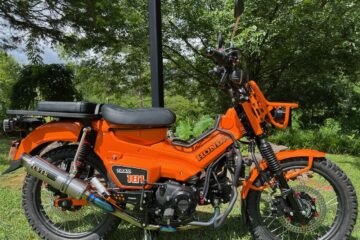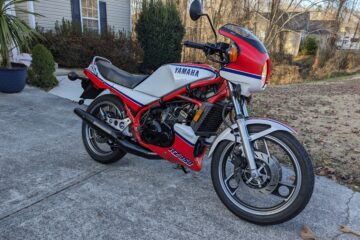Years ago- back in the 70’s, Consumer reports tested motorcycles for their readers. As bike sales fell in the 80’s, they quit. Well, when bike sales soared this past summer due to 4.00/gal gas, they got back in the motorcycle testing business. But the question is “can we learn anything new from them?” As it turns out, not to much. Since they haven’t tested any bikes in recent years, the one reason to read their reviews is missing- long term reliability. All in all, the enthusiast magazines are going to give you a better feel for how a bike performs than Consumer Reports, but hey, if they can get a few more people to buy their magazine, it’s fine by me. They do draw a few conclusions in the press release, but since you have to have a subscription to read the whole article, I can’t really give you any more info on their testing methods. I’m not sure they are going to find an audience for motorcycle reviews, but scooter reviews might just be their niche.
With their 35 to 40 mph top speed, 50cc scooters may suffice for short trips in suburban and city riding. Of the three models tested, the Vespa LX 50’s smooth four-stroke engine, good ergonomics, controlled ride quality, and solid fit and finish made it the favorite choice, but it is very slow. Testers found that “you get what you pay for,” with the inexpensive $995 Motorino Allegra getting the worst marks for vibration, harsh ride, and subpar fit.
In the 125cc to 150 cc category, the tested models’ top speed range of 55 mph to 57 mph made them much better suited for keeping up with traffic but still not recommended for freeway or interstate use. The 150cc Kymco People and Vespa LX both proved well-rounded, easy-to-ride machines, with responsive handling and easy maneuverability. With its big 16-inch wheels, the Kymco offered superior stability and off-the-line acceleration while the Vespa excelled in ride quality, roominess, under-seat storage, and build quality. The third model tested, the Yamaha Vino 125 could not match the other two models’ ride experience. While offering the lowest price point at $2,899, the Yamaha’s harsh ride and sluggish engine detracted from its cost benefit.
Of the two 250cc motorcycles tested, the Kawasaki Ninja 250 was the clear winner, outperforming the Honda Rebel 250 in most categories. With its agile handling, and slick-shifting 6-speed manual transmission, this entry-level motorcycle is an excellent choice for individuals who want to combine low cost of ownership with a more performance-focused ride experience. Agile, stable, and refined yet brisk, the Ninja also had the best braking performance of any model tested. Compared with scooters, which have easy-shifting automatic transmissions, step-through designs, and handy under-seat storage capacity, motorcycles, however, are less practical and their manual transmissions and higher performance require more skill to handle well.
Like Consumer Reports in-depth auto testing process, scooters and motorcycles were subjected to an extensive sequence of standardized tests to determine their performance in categories such as acceleration, braking, fuel economy, noise/vibration, top speed and comfort. To evaluate ride, handling and everyday liveability features, the staff designed a new 5.2 mile testing route, including stops and starts on hills and a variety of tight turns, utilizing the Auto Test Center’s multi-surface, multi-grade facility. New testing procedures were also added to accurately evaluate the machines’ response to common urban riding situations, such as the ability to quickly and safely accelerate through an intersection.



0 Comments